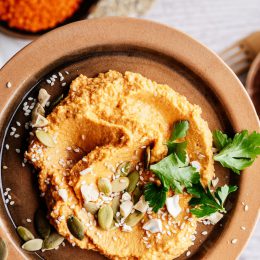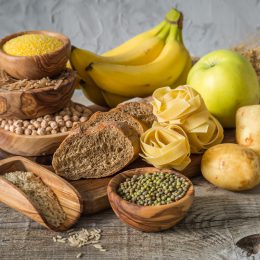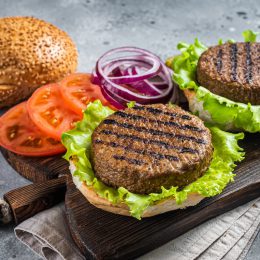What Are Ultra-Processed Foods — and Should You Avoid Them?
The vast majority of foods in a supermarket are processed in some way. They’re not all bad, but some may harm your health more than others.

Steer your cart through any supermarket and you’ll notice that nearly everything there comes in a package. Most are considered “processed” foods, a term you’ve likely heard — and perhaps feared — for years. But not all processed foods need to be avoided. After all, this category includes everything from a can of beans to a candy bar.
To better characterize this broad category of food, a new term has been used more recently: ultra-processed foods. The term doesn’t have a set definition, but it generally refers to packaged foods made from many ingredients, often including added salt, fat, sugar, and preservatives.
Researchers estimate more than 70 percent of the packaged foods and beverages in America can be considered ultra-processed. And more than half of the calories a typical American adult eats may hail from ultra-processed foods. A growing body of research suggests that may mean trouble for our health.
Here’s what you need to know about ultra-processed foods and why you may benefit from eating less of them.
Healthy eating and fitness go together! SilverSneakers classes and events are happening right now at participating gyms, online through SilverSneakers LIVE, and at community centers near you. Activate your free online account to get started.
What Are Ultra-Processed Foods?
Every food at the supermarket goes through some amount of processing. “Unprocessed” or “minimally processed” foods include whole fruits and vegetables in the produce aisle, but also things like frozen vegetables or bags of rice.
Moderately processed foods have undergone further processing, but still typically contain only a few ingredients. Think peanut butter, canned fruits and vegetables, or dried pasta.
And then there’s ultra-processed foods, or UPFs for short. There’s no universal set of criteria for defining a UPF. But generally, they are foods and drinks that:
- Have undergone multiple industrial processing steps
- Are made mostly from ingredients extracted from foods, like starch, oils, sugars, and syrups
- Include many added ingredients like artificial flavors, preservatives, and emulsifiers to alter taste, texture, and shelf life
In other words, ultra-processed foods are foods and beverages that you would struggle to recreate in your own kitchen. Items that can fall into this category include:
- Frozen meals
- Packaged pastries, cookies, and other baked goods
- Soft drinks, energy drinks, and other sugary beverages
- Hot dogs and deli meats
- Boxed cereals
- Fast food
- Chips, crackers, and other packaged snack foods
Ultra-Processed Foods and Your Health
UPFs aren’t always bad, but they tend to be high in added sodium, sugar, and fat — nutrients that health experts recommend limiting. And a growing body of research has linked UPFs to poor health. One large review study involving nearly 140,000 people from five different continents over 10 years found that higher intakes of UPFs was linked to an increased risk of premature death.
Another study in Italy found that people who ate the most UPFs were 50 percent more likely to die from heart disease than whose who ate the least. Authors of the study concluded that higher sugar intake partly explained the increased risk of death. Other studies have found that UPFs are linked to negative health outcomes like cancer, diabetes, and cognitive decline.
A small 2019 clinical trial tested the difference between an ultra-processed and unprocessed diet. In this study, 20 participants were given either an ultra-processed or unprocessed diet for two weeks, then the opposite diet for two more weeks. The food offered on the two diets was similar in calorie and nutrient content, and participants were allowed to eat as much as they wanted.
The results? While on the ultra-processed diet, participants ate about 500 calories more per day on average than on the unprocessed diet. This resulted in an average weight gain of about two pounds. On the unprocessed diet, participants lost about two pounds. They also had changes in their hunger hormones, with a decrease in the hormone that makes you feel hungry and an increase in the appetite-suppressing hormone.
So far, none of these studies have determined why UPFs may be bad for health. The clinical trial suggests that people are more likely to overeat on an ultra-processed diet. This makes sense, as other research shows that highly processed foods tend to be less filling. Food companies also engineer processed foods to be “hyper-palatable” — that means they’re super tasty and hard to resist.
When to Avoid Ultra-Processed Foods
There’s no need to completely banish UPFs from your diet. They do have some advantages —they’re inexpensive, convenient, and have a long shelf life. Some UPFs include good-for-you nutrients like fiber, protein, and vitamins and minerals (think, granola bars, beef jerky, and flavored yogurts).
That said, many are “empty calories,” packed with salt, sugar, and fat with little to no redeeming nutrients (think, potato chips, candy, soda).
You can make healthier choices when buying packaged foods by reading the labels. Check the ingredient list on the back of the package. Generally, the shorter the list, the less processed the product is.
Check added sugar and sodium on the nutrition facts panel, too.
- For added sugars, look for products with 0 grams, or as few grams as possible.
- For sodium, something with 5 percent or less daily value (DV) is considered low sodium (20 percent or more is considered high sodium).
Look at the front-of-package labels, too. Words like “low sodium” or “no sugar added” can be useful. If you’re debating between products, compare the labels and choose the one with less sodium and added sugar.
Subscribe to our newsletter
It's quick and easy. You could be one of the 13 million people who are eligible.
Already a member? Click to discover our 15,000+ participating locations.
Follow Us
Recommended reading: How to Read the New Nutrition Labels, and Why It Matters
You can also work towards replacing UPFs with less processed foods in your diet. For example, instead of buying flavored yogurt cups, buy plain yogurt and add your own toppings like honey, granola, or frozen fruit.
If you regularly rely on fast food or frozen dinners, try cooking more meals at home. You don’t have to make them completely from scratch. Try semi-homemade meals with a mix of unprocessed ingredients and convenience products like frozen or canned vegetables and jarred sauces.
Ultra-processed foods aren’t something you need to fear or feel bad about eating. But it’s a good idea to balance them out with less processed, nutritious foods like fruits and vegetables, whole grains, fresh (or frozen) meat and fish, eggs, and dairy.
See our sources:
Study on UPFs in the U.S. food supply: Nutrients
UPFs and added sugars in the U.S. diet: BMJ Open
Study on UPFs and mortality: The American Jounral of Clinical Nutrition
Study on UPFs and heart disease mortality: The American Journal of Clinical Nutrition
Clinical trial on processed vs. unprocessed diets: Cell Metabolism
Study on satiety of UPFs vs. unprocessed foods: Food & Function
Check Your SilverSneakers Eligibility Instantly
SilverSneakers members can go to thousands of gyms and fitness locations across the nation, plus take SilverSneakers LIVE online classes that are designed for seniors of all levels. If you have a Medicare plan, it may include SilverSneakers — at no additional cost. Check your eligibility instantly here.
Already a member? Get your SilverSneakers member ID and exclusive fitness content by activating your online account here.
Not eligible for SilverSneakers? You can still get 200+ free SilverSneakers On-Demand videos and stay in touch with us by creating your online account.





